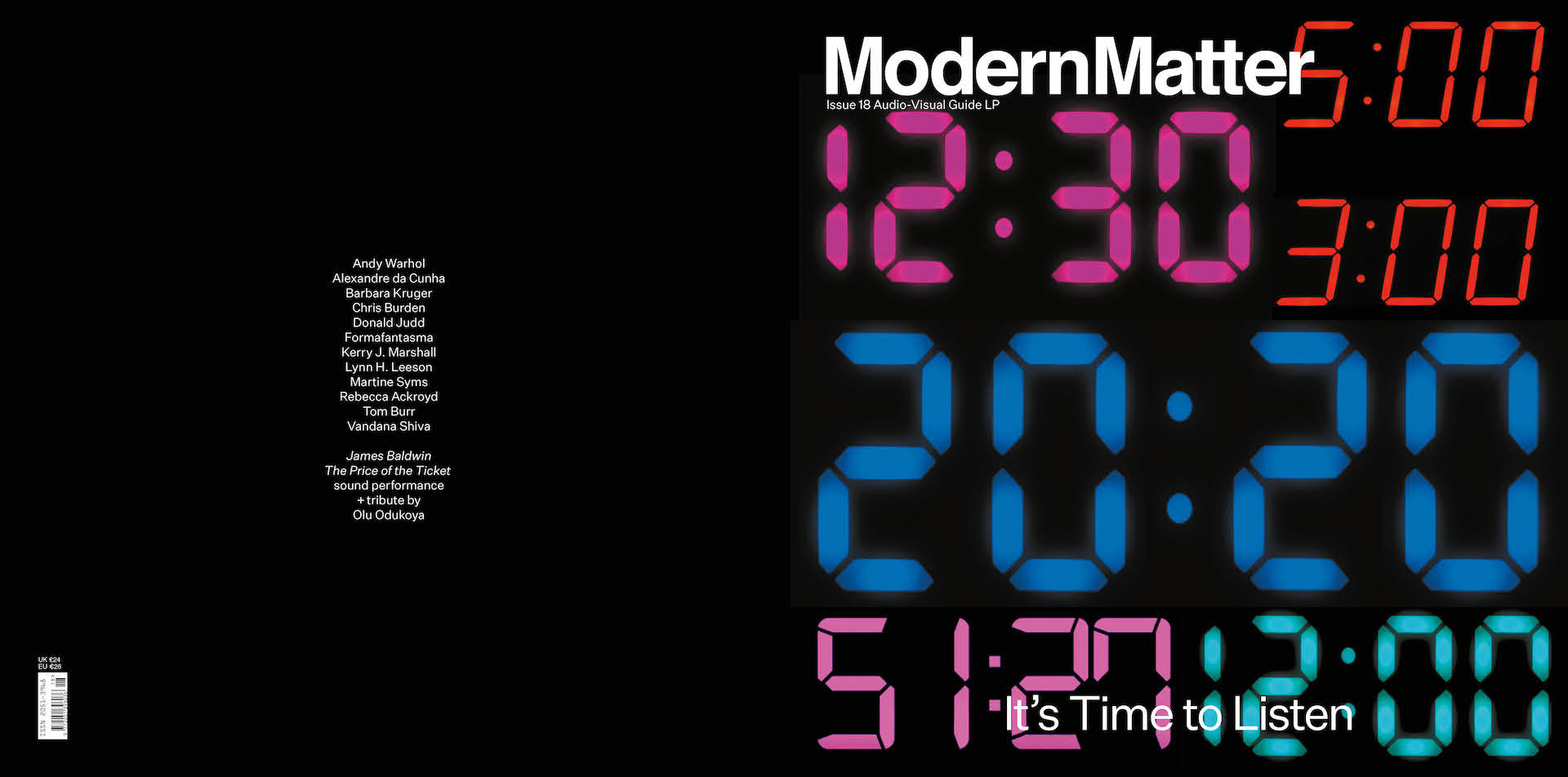Behind the Lens
Spaces In-Between
The transcendent visual storytelling of Olu Odukoya
To kick off this interview, I asked Olu Odukoya whether the term “art director” or “artist” more accurately describes his work. The seemingly simple question sparked a wide-ranging reflection on his multi-hyphenated creative production—including the launch of his cult-classic Kilimanjaro magazine nearly 20 years ago, produced in the off hours of what was then his day job as an optician; his pioneering work on haute fashion campaigns and Modern Matter (which Serpentine curator Hans Ulrich Obrist has called “the best magazine in London”); and ultimately his most recent collaborations with Louis Vuitton and photographer James Barnor. That Odukoya was never able to offer a concise answer is in fact the only possible answer.

Olu Odukoya. Photo © Olu Odukoya

Every evening in April this year on the Piccadilly Lights screen in London, Serpentine in collaboration with CIRCA presented films celebrating the work of British-Ghanaian photographer James Barnor. For one film, Odukoya revisited the Barnor archive, exploring three themes that the two artists share in their practices: women, color and modernism, and time and perspective. Screenshot © CIRCA
From publishing and curating to image making and object design, the London-based auteur’s work is unified by a preternatural obsession with communication, emotional connection, and quality. When asked what prompted him to launch his own publication dedicated to fashion and culture back in 2003, he explained that he was inspired by European freedom of speech laws and began publishing just because he could. “I wanted to say my truth,” he added. The unique character of Kilimanjaro—underground yet sophisticated, intimate yet intellectual, raw yet beautiful—quickly attracted a dedicated fan base within London creative circles and beyond. Opportunities and commissions from the likes of Fallon Worldwide, Yves Saint Laurent, Balenciaga, and Hauser & Wirth have steadily flowed to him ever since, powered almost entirely by word of mouth recommendations.

In 2012 , Odukoya used Kilimanjaro to curate a love letter to Roni Horn (left), turning the magazine into an unofficial catalog for the Roni Horn Exhibition at Hauser & Wirth. Photos © Olu Odukoya

Modern Matter 9 and Modern Matter 15. Photos © Olu Odukoya
Odukoya cites his dual identities, both British and Nigerian, as a primary source of his much sought-after point of view. From the former, he embraces the provocative culture of contemporary art that asks people to think differently, coupled with the clarity of purpose associated with 20th-century design theorists like Victor Papanek and his seminal book The Politics of Design. From his African heritage, he explained, he takes a holistic, deep-thinking approach along with a commitment to “care” (a term he uses often to describe his attention to detail). While eager to subvert stereotypes, he also feels that his roots give him a perspective that allows him to observe his surroundings at a distance, enabling him to recognize “the gaps in between things” and draw out fresh connective tissue. He puts a lot into the conceptualization phase of his work, so that the results can be immediately graspable and unforgettable to anyone anywhere— “like ABC,” in his words.
In August 2021, the eponymous founder of Louis Vuitton would have turned 200, and to celebrate the fashion brand invited 200 international visionaries to create something new inspired by the legacy of the iconic Louis Vuitton trunk. Odukoya unsurprisingly took the commission into an unexpected, more narratively driven direction, foregoing a trunk-like form altogether. Of his design, Travel Companion, he explained: “Based on one of my original sculptures that depicts an exaggerated, abstracted human figure, the concept is intended to draw focus to the relationship between the inveterate traveller and their luggage, the two presented together in a mutually-supportive embrace.” To produce the design, he found a foundry in Switzerland that could execute his vision at the highest level. He hopes to collaborate with the extraordinary Swiss artisans again to make a cutlery set he’s been dreaming about, perhaps for his design label Joko.

Travel Companion by Olu Odukoya for Louis Vuitton. Photos © Louis Vuitton

Studio Joko is Odukoya's cross-disciplinary project that focuses on design for better living.The studio’s name comes from the Nigerian Yoruba word for “sit” and reflects the idea of furniture as a medium for storytelling and as an intermediary between everyday life and the arts. Photo © Olu Odukoya
“My approach is to design stories,” Odukoya said, circling back to the beginning of our conversation, trying to define his work. “People ask me to collaborate with them because of my eye. It’s because I care. My work is all about meaning, about consciousness, about what you want and not what you have. It’s poetry and product.” Whether artist or art director or something in between, Odukoya’s vision inspires us to see differently; his care inspires us to care too. ◆

Modern Matter 18. Photo © Olu Odukoya
—Above in story: Balenciaga Winter 17 Campaign video by Olu Odukoya. Styling by Lotta Volkova. Sound by @bfrnd.
